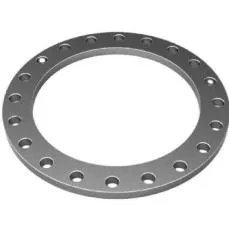-
Cangzhou Yulong Steel Co., Ltd.
-
Phone:
+86 13303177267 -
Email:
admin@ylsteelfittings.com
- English
- Arabic
- Italian
- Spanish
- Portuguese
- German
- kazakh
- Persian
- Greek
- French
- Russian
- Polish
- Thai
- Indonesian
- Vietnamese
- Zulu
- Korean
- Uzbek
- Hindi
- Serbian
- Malay
- Ukrainian
- Gujarati
- Haitian Creole
- hausa
- hawaiian
- Hebrew
- Miao
- Hungarian
- Icelandic
- igbo
- irish
- Japanese
- Javanese
- Kannada
- Khmer
- Rwandese
- Afrikaans
- Albanian
- Amharic
- Armenian
- Azerbaijani
- Basque
- Belarusian
- Bengali
- Bosnian
- Bulgarian
- Catalan
- Cebuano
- China
- China (Taiwan)
- Corsican
- Croatian
- Czech
- Danish
- Esperanto
- Estonian
- Finnish
- Frisian
- Galician
- Georgian
- Kurdish
- Kyrgyz
- Lao
- Latin
- Latvian
- Lithuanian
- Luxembourgish
- Macedonian
- Malgashi
- Malayalam
- Maltese
- Maori
- Marathi
- Mongolian
- Myanmar
- Nepali
- Norwegian
- Norwegian
- Occitan
- Pashto
- Dutch
- Punjabi
- Romanian
- Samoan
- Scottish Gaelic
- Sesotho
- Shona
- Sindhi
- Sinhala
- Slovak
- Slovenian
- Somali
- Sundanese
- Swahili
- Swedish
- Tagalog
- Tajik
- Tamil
- Tatar
- Telugu
- Turkish
- Turkmen
- Urdu
- Uighur
- Welsh
- Bantu
- Yiddish
- Yoruba

Oct . 21, 2024 17:58 Back to list
Understanding the Functionality and Applications of Non-Concentric Reducers in Engineering
Understanding Non-Concentric Reducers Applications and Benefits
In the realm of fluid dynamics and industrial piping systems, reducers play a crucial role in managing the flow of fluids effectively. Among these, non-concentric reducers stand out due to their unique design and manifold applications across various industries. This article delves into the definition, types, advantages, and applications of non-concentric reducers, providing insight into their importance in modern engineering.
What Are Non-Concentric Reducers?
Reducers are plumbing fittings used to connect two pipes of different diameters, facilitating the transition of fluid flow from a larger diameter to a smaller one, or vice versa. Unlike concentric reducers, which maintain a uniform central axis between the larger and smaller openings, non-concentric reducers are offset, meaning that the centerlines of the inlet and outlet do not align. This design can lead to improved flow characteristics in certain applications, reducing turbulence and pressure loss.
Types of Non-Concentric Reducers
Non-concentric reducers come in various materials, sizes, and shapes to cater to specific needs. Some common types include
1. Eccentric Reducers These have one side flat, allowing for a more streamlined connection when transitioning from a larger to a smaller diameter. This flat side assists in maintaining a level flow, making it an excellent choice for applications where air release may occur.
2. Offset Reducers These are used in applications where space constraints prevent the use of standard reducers. Their unique design allows for adjustments in alignment while maintaining a smooth flow path.
3. Stainless Steel and PVC Reducers Depending on the industry's needs, non-concentric reducers can be made from materials such as stainless steel for high-temperature applications or PVC for chemical resistance.
Advantages of Non-Concentric Reducers
Non-concentric reducers offer several benefits, making them an essential component in many fluid transport systems.
non concentric reducer

2. Improved Flow Efficiency By offering a smoother transition between different pipe sizes, non-concentric reducers can enhance the overall flow efficiency of the system, potentially leading to energy savings.
3. Space Optimization In scenarios where space is limited, such as in retrofitting existing systems, non-concentric reducers can provide the necessary adaptation without compromising system integrity or performance.
4. Versatility Non-concentric reducers are found in various applications across industries, from oil and gas to water treatment, making them versatile components in modern engineering.
Applications of Non-Concentric Reducers
The applications of non-concentric reducers are vast, spanning multiple industries. Some key areas include
1. Oil and Gas In pipeline systems, non-concentric reducers help manage fluid flow and pressure adjustments efficiently. Their design is beneficial in transportation lines where varying pipe sizes are common.
2. Chemical Processing Non-concentric reducers are used in chemical plants to connect different pipes handling various substances, ensuring safe and efficient transfer while minimizing the risk of corrosive damage.
3. Water Treatment Facilities In water treatment plants, these reducers are essential for transitioning between different pipe sizes, aiding in the effective distribution of treated water.
4. HVAC Systems Non-concentric reducers are used in heating, ventilation, and air conditioning systems to facilitate airflow efficiently in a confined space.
Conclusion
Non-concentric reducers are critical components in modern piping systems, offering unique advantages that enhance fluid dynamics across various industries. Their ability to reduce turbulence, improve flow efficiency, and provide flexibility in application makes them an indispensable tool for engineers and fluid system designers. As industries continue to evolve and seek innovative solutions, the role of non-concentric reducers will undoubtedly remain significant, contributing to the overall efficiency and effectiveness of fluid transport systems.
Latest news
-
ANSI 150P SS304 SO FLANGE
NewsFeb.14,2025
-
ASTM A333GR6 STEEL PIPE
NewsJan.20,2025
-
ANSI B16.5 WELDING NECK FLANGE
NewsJan.15,2026
-
ANSI B16.5 SLIP-ON FLANGE
NewsApr.19,2024
-
SABS 1123 FLANGE
NewsJan.15,2025
-
DIN86044 PLATE FLANGE
NewsApr.19,2024
-
DIN2527 BLIND FLANGE
NewsApr.12,2024
-
JIS B2311 Butt-Welding Fittings LR/SR 45°/90° /180°Seamless/Weld
NewsApr.23,2024











